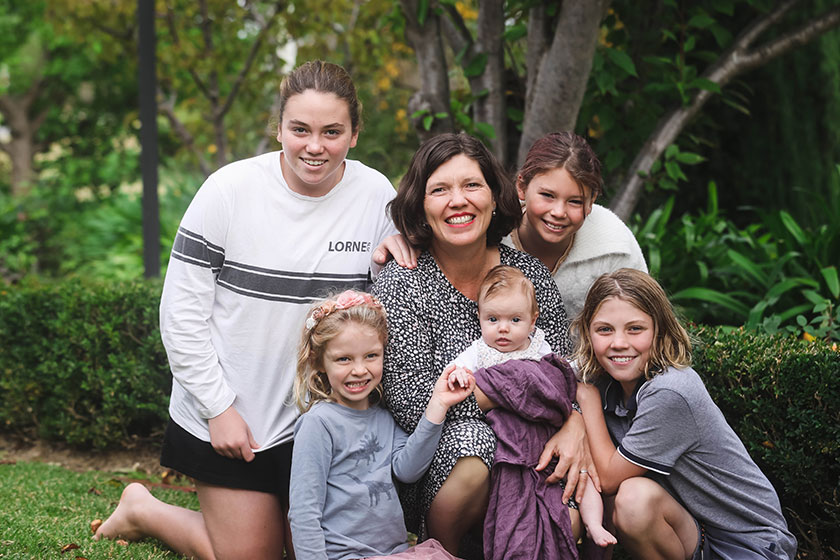Reflections of COVID
10 May 2022

In February 2020, Dr Georgina Hayden was celebrating with her colleagues the extended opening hours of Geelong’s only private Emergency Department to 24/7.
There had been a handful of cases of COVID-19 in Australia at this point but it had not yet been declared a pandemic. That would change mere weeks later.
Dr Hayden, who is St John of God Geelong Hospital’s Director of Emergency Medicine, said opening the Emergency Department 24/7 was a massive change for the hospital’s clinicians and nursing staff who now needed to be prepared for whatever walked through the door any time of the day or night.
And that very quickly included COVID-19.
“To put it in context, our hours were initially limited to 8.00am to 10.00pm but we were finding the community wanted more access to our care. Some were telling us they would have chosen our hospital if the ambulance was able to take them there in the early hours of the morning, and some were hanging out until we opened in the morning and were desperately unwell,” she said.
“So in September 2019 we announced the Emergency Department would open 24/7 and that took effect in early 2020.
“At that stage, we were focused on getting our visiting medical officers (VMOs), nurses and other service providers used to the new operating model and employing more doctors and nurses to cover the night shift, and then, suddenly, the borders shut to everyone.”
The recruitment obstacles, which have continued for all health care providers across Australia, were just the start of the issues Dr Hayden and her team faced when the pandemic broke out in Australia.
“The challenge of COVID-19 at the start was the unknowns. We didn’t know much about the virus, how it was going to present, or who it would present in and we were rapidly learning treatment options,” she said.
“We were pulling together what we needed and how we, as a region, would respond. What I particularly liked is that as a region, Geelong came together – St John of God Geelong Hospital, Barwon Health, and Epworth - to work out how we were going to deal with this virus, what our bed capacity was, and other resources we would need.
“This started early in 2020 and the conversations and relationships continued in 2021 which was a nice approach. We were collaborating, meeting weekly, sharing data and communications, including with Ambulance Victoria, as one health service entity.
“Of course it wasn’t as smooth as that but it was a really strong response.”
In addition to the unknowns regarding the virus itself, the fear and worries that the hospital caregivers were experiencing was all consuming particularly in the early days.
“When COVID-19 first hit the staff anxiety was huge,” Dr Hayden said.
“I worked really closely with our nurse unit manager and we felt we were on the same page with our communications, but the nature of this pandemic meant that what we were sharing in the morning from the authorities had often changed by the afternoon. We needed to share information promptly without overwhelming our teams.
“We were lucky we did not have any workplace infections in the first year of the pandemic but we advocated strongly for improved ventilation in the department as well as the construction of a COVID-19 zone in the department which was a welcome move to keep both the patients and caregivers safe.
“Clinically, we were doing things like making a COVID-19 area and designating cubicles for suspected patients and addressing evolving requirements in terms of personal protective equipment (PPE). Initially we were just wearing it for suspected patients, at one stage we were wearing it for all for patients, and now using eyewear and N95 masks for all patients and full PPE for respiratory patients.
“We were counting boxes of gowns and working out how much hand sanitiser we would need. As part of our huddle we were giving stock updates making sure we would have enough gowns over the weekend shifts. Things I had never had to directly address in such a way before.
“The nature of working in a small region meant that all of our staff work elsewhere, so the rumours that they heard from their other services were feeding anxiety into ours, but credit to our executive and stores, their messaging was very consistent – we have enough equipment, we just have to ask.”
Not one to shy away from a challenge, in the middle of 2021 Georgina fell pregnant with daughter, Ava, who was born early in 2022.
This meant she found herself, a mother to four young daughters already, pregnant, working in a busy emergency department in the middle of a pandemic.
Georgina said she focused on the positives.
“I was grateful that I was pregnant in 2021 as I was double vaccinated by that point which was a great reassurance and I got my third dose as soon as I could,” she said.
“I also had the benefit of reflecting on the prior 12 months and seeing women who had been pregnant and given birth to healthy babies, and knowing that there were no major links with fetal or congenital abnormalities which are the things that would have worried me.You may be interested in
